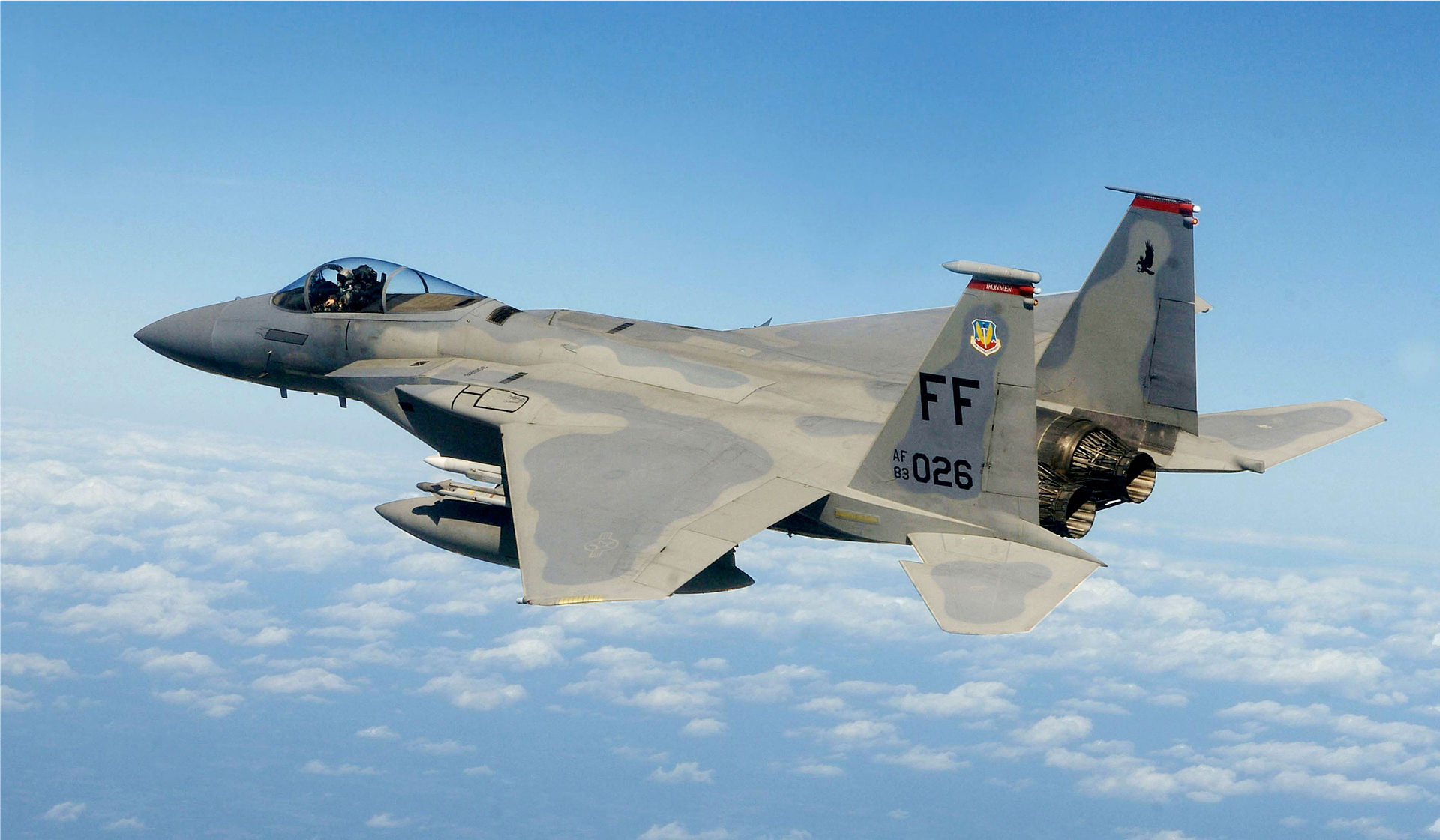The latest SU-35 the aircraft
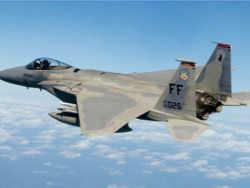
At once many network mass media of Russia published notes that "flight tests of the new Russian fighter Su-35 showed that the plane surpasses the main foreign analogs in the technical characteristics, including the French Rafale, Eurofighter Typhoon, and also the American F-15 Eagle, F-16 Fighting Falcon, F/A-18E/F Super Hornet and F-35 Lightning II."
These and to it similar statements appeared many time, but, except scepticism, a little that cause.
Let’s begin with that "comparison" is made incorrectly. Su-35, being Su-27 family updating, is on the Russian classification "the heavy fighter", and on NATO classification – "the fighter of a gain of an air superiority". In this class of fighters there is F-22 Raptor and family of the fighters F-15 Eagle. All other, listed fighters belong on the Russian classification to a class "easy" or "average", and on NATO – to a class of strike fighters or "multipurpose" fighters. If to compare Evrofaytera, Rafali, F-16 Fighting Falcon and F/A-18E/F Super Hornet, in the Russian nomenclature of the Air Force they in a class of family of fighters MiG-29. And F-35 Lightning II in general cannot be included in this list, as it not only other class, but also other generation.
By the way about disputes about that such this most notorious "the fifth generation".
It is clear that in зависимосто from fighter type, whether it is the fighter of "a superiority gain" or a strike fighter, various demands are made to its tactical and technical possibilities and tactics of application. It is not powerful uniform, as they say.
Tactics of use of fighters of a gain of a superiority of the 4th generation demanded overwhelming advantage in air fight on a distant and average distance at the expense of the best BREO (the Onboard Radio-electronic Equipment) and rocket arms, advantages in near air fight at the expense of the best maneuverability, controllability and gun arms. Besides, to fighters of the 4th generation increased requirements on survival rate, that is ability to transfer serious damages to a course of performance of fighting departures were shown.
According to such requirements F-15 Eagle were created in the seventies.
In 1982 of the Air Force of Army of Defense of Israel the first applied in air fights these planes and struck the whole world with their superiority. In fight over a valley of Bekaa Israeli F-15 and F-16, in 3 days, from June 9 to June 11, they brought down 76 (according to the Israeli data) or 68 (according to the Soviet data) the Syrian MiG and Sushek, without uniform loss for its part. One Israeli F-15 was damaged, but returned on base, was repaired and returned in a system. This plane received the R-60 rocket directly in a nozzle of one engine, but the put survival rate and the car worked could return on the airfield.
The case when Israeli F-15, as a result of collision with the fighter Skaykhok during doctrines, lost almost completely right wing is also known, but after all could return on the base and make landing. Improbable plane!
When fighters of the 4th generation only started "to become on a wing", in the USA serious successes in area of creation of planes on the Stealth technologies – exactly one year prior to battle over Bekaa were reached, the first weeds made F-117 Nighthawk. When military theorists were convinced of advantages of a low-visibility, the idea to combine the highest fighting possibilities of fighters of the 4th generation with the Stealth technology low-visibility naturally was born. So there was a concept of the fighter of the 5th generation. In May, 1981 the Pentagon addressed to the aircraft-building companies with inquiry according to the Advanced Tactical Fighter (ATF) program. In five years, in 1986 in the ending of competition there were projects Lokhid Martin YF-22 and Northrop Grumann of YF-23. Both planes combined developed possibilities F-15 with a low-visibility not worse, than at F-117.
In 4 years, on August 27, 1990 Nortropovsky YF-23, and a month later and Lokhidovsky YF-22 for the first time flew up. The final victory in competition was gained by Lokhid’s project and on September 7, 1997 the first flight copy of Raptor F-22 made the first flight.
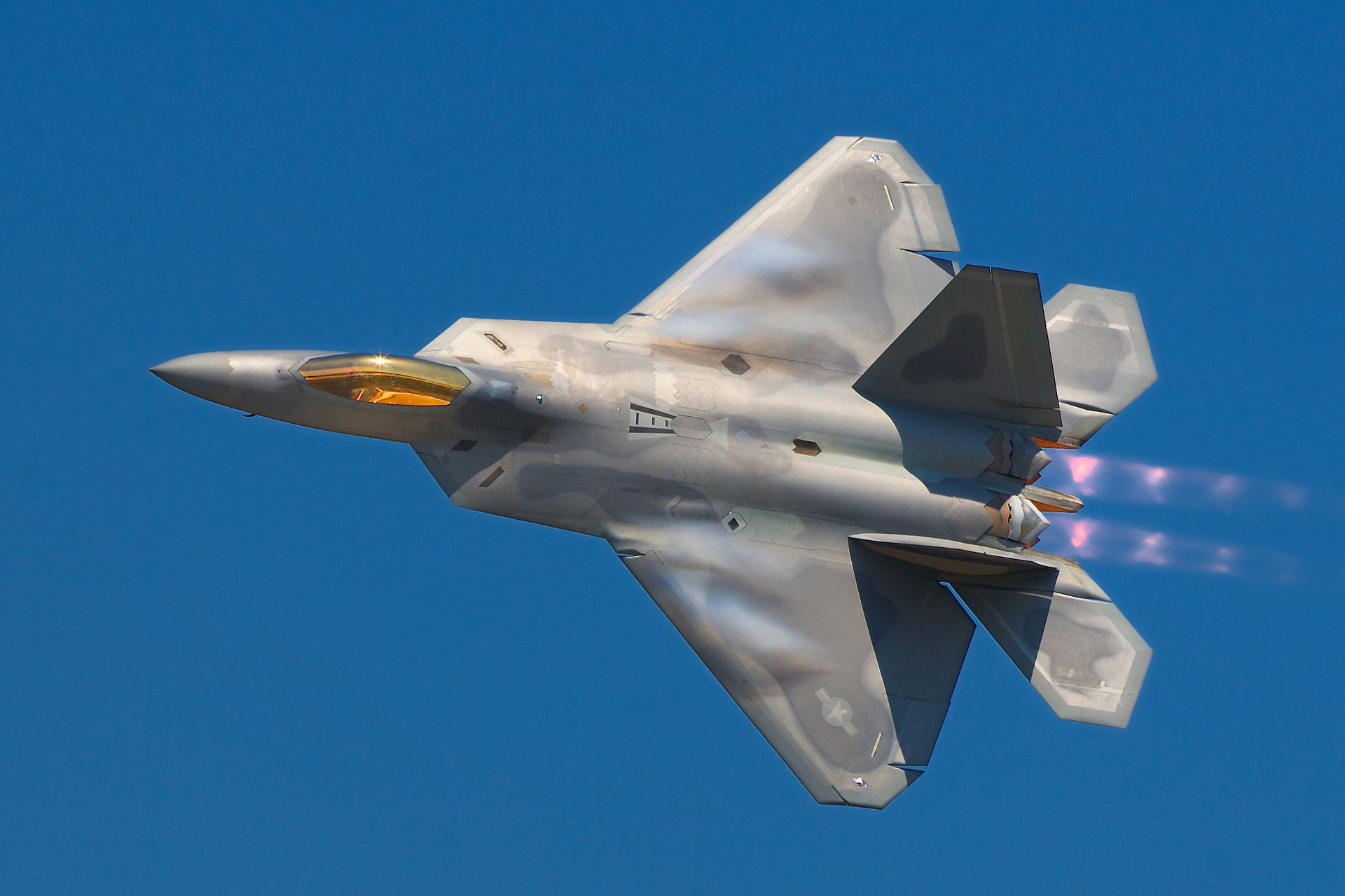
8 years of tests and first "tests" in doctrines showed that it is necessary urgently and to reinterpret tactics of application completely. Innertsiya of thinking of military theorists led to "superfluous" possibilities of which in new tactics it was not found applications. It was necessary to refer supermaneuverability to such "superfluous" characteristics.
The low-visibility of the fighter of a gain of an air superiority of the 5th generation allows it not to engage on near and average distances with fighters of the opponent, and emergence of rocket arms of vserakursny application in general made maneuverability an insignificant factor. During too time, application of an operated vector of draft considerably complicated both a plane design, and the software of board computers, plus made the plane much more expensive.
Tactics of application F-22 consists in a barrazhirovaniye at very big height (18-22 km) and on supersonic speed (a cruiser supersound) out of radius of detection by air and land sensors of the opponent. At the same time, thanks to very powerful radar with AFAR which is very difficult for finding passive means of a radar-location, and also to network possibilities and a powerful rocket voorzheniye, F-22 it is capable to strike with guarantee fighters of the opponent, without entering with them fighting contact. Shortly so the concept is expressed by the phrase "to the first saw – the first brought down".
Supermaneuverability remained "out of work".
Mistake with supermaneuverability considered at design of the second fighter of the 5th generation. This time projected a strike fighter.
It is clear that requirements to the plane which "is more ground" to work against objects of the opponent at a surface than to force down fighters of the opponent, should be perfect others, than to "the fighter of fighters". Application tactics other, demanded characteristics too others.
Supermaneuverability replaced with spherical information awareness of very big radius and vserakursny rocket arms. With it questions do not arise. "To sit down on a tail" to such fighter so mortally it is dangerous, as well as to have it on the tail.
Whether but the cruiser supersound is necessary to this fighter? What speed is required to it at performance of the main objectives – supports of armies and destruction of air defenses systems of the opponent? It appears that optimum speed does not exceed 800-900 km/h. So it also constructed, with cruiser speed of 850 km/h.
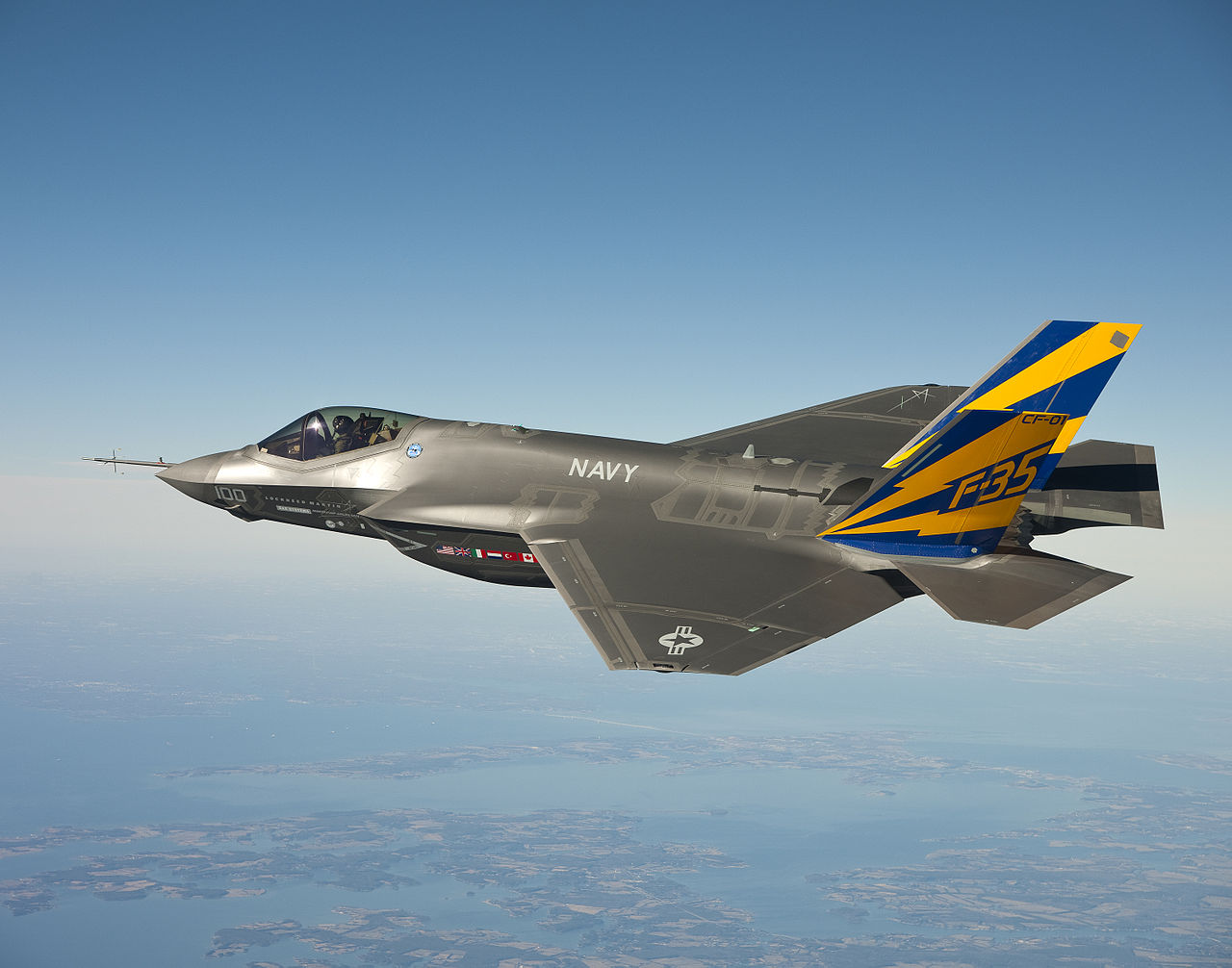
Purpose of a low-visibility at F-35 too another. F-22 it is hardly noticeable, that from big distances to force down fighters of the opponent, remaining invisible, and F-35 a low-visibility, it is generally necessary to approach imperceptibly to air defenses systems of all levels and to destroy them, remaining unnoticed. It is natural that F-22 too can "work" on objects and armies, and F-35 can successfully destroy fighters of the opponent, but each of them better does that work for which it is intended initially. Coming back to the concept "the fighter of the 5th generation, again I will note what silly to make to fighters of different function identical demands. So cruiser supersound is a requirement to "the fighter of fighters" and corresponds to tactics of its use. In this characteristic at all too is a high time it is required for the fighter of a bomber of the 5th generation, so "the requirement to the 5th generation" cannot be. Supermaneuverability in general ceased to be the requirement to modern planes. It is expensive, very difficult and in the conditions of application of spherical information awareness in a combination to vserakursny rockets, not only "excessive" quality, but also quite harmful. It is impossible to forget that these planes yet pilotless, and the person – not the car. Influence of the highest overloads at performance "over" – maneuvers sharply is reduced by possibilities of the pilot if do not give to consciousness and failure loss (an example – F-22, broken on March 25, 2009, when the most skilled pilot verifier of the company Lokhid, the colonel of the Air Force in resignation of David Paul Cooley fainted at maneuver performance with an overload from above 9g at small height).
Supermaneuverability very much зрелищна on all "displays" for general public, but professional fighters call for a long time it "stunting". It should be noted that in the late eighties – the beginning of the 90th years of the last century Americans too paid a supermaneuverability tribute. Devices of 3-axial management were developed by a vector of draft of engines which were established on experimental fighters of the 4th generation F-15, F-16 and F/A-18, but they quickly enough found out that it does not give an essential gain of fighting possibilities, and here complexity of management and computer programs become other-wordly.
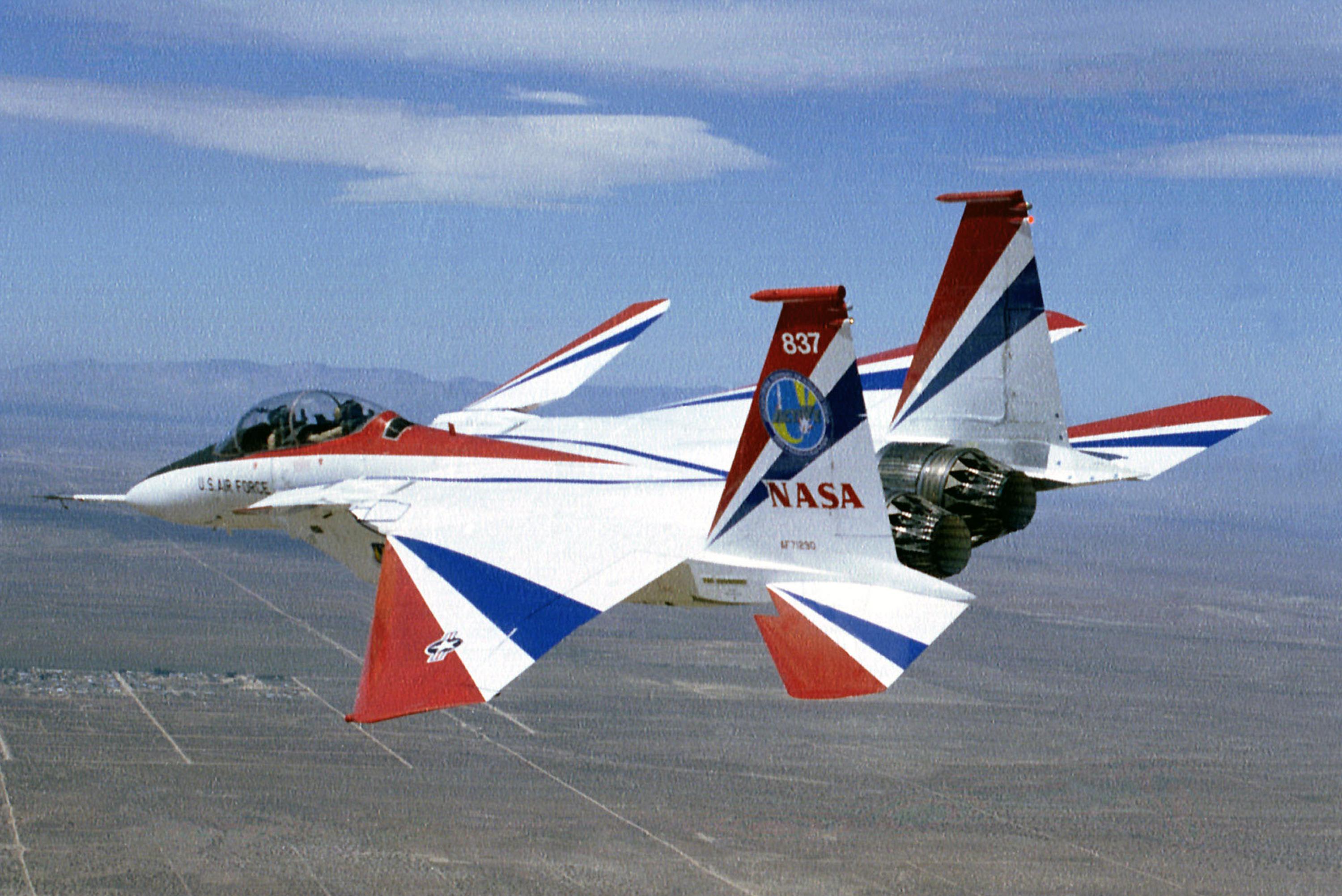
F-15 ACTIVE tests (with an operated vector of draft and PGO) finished the Air Force in 1991, having transferred NASA plane for their research works. The subject operated векторя draft in the USA did not receive further development. Let’s return to the newest fighter of NPO Sukhoy Su-35 with which I began this article. Su-35 is updating of the fighter Su-27 and its successor Su-30MKI which is delivered for the Air Force of India. In fact, except some evolutionary development of the BREO some systems and (promised) new engines (Su-30MKI engines with an operated vector of draft in actual fact appeared ugly bad), this car anything new does not differ. Direction all too on development of characteristics of maneuverability which the Western school of aircraft construction refused 10-12 years ago. Few years ago Hindus took part in doctrines the Red Flag which are carried out to the USA and arrived on Su-30MKI. Despite bravura official reports of the Indian press, video of analysis of doctrines which was carried out by the instructor colonel of the U.S. Air Force filtered into the Internet. I do not know, whether will work, but I will try to deliver to video:
Americans appeared are strongly disappointed with this Drying. It was pointed to disgusting quality of engines, the lowest reliability, very weak programs of the board computers operating flight. Very quickly pilots American F-15 developed tactical receptions which forced the Indian pilots to maneuver with use of management of a vector of draft that led to sharp decrease in speed and "sag" of Su-30MKI on a tail. As a result, during educational near боёв all Su-30 appeared are brought conditionally down, without having put a loss to the conditional opponent. Many efforts delivered engines Sushek to organizers of doctrines. For take-off from one VPP Sushkam was required an interval not less than 4 minutes. Otherwise engines could fail or could arise "помпаж". At the price of big efforts Americans managed to achieve reduction of an interval of take-off till 2 minutes, but also it is unacceptable, if in air hundreds cars have to rise. By the end 3 days of flights ALL engines failed and replacement demanded, and transport with replaceable cursors was late. When, at last, engines arrived, it appeared that their replacement will take some days (on F-15 the standard of time of works for engine replacement – 8 hours for a brigade of technicians from 3 people. By the way, on F-22 this standard only 4 hours and for 2 people). Many complaints were caused by hydraulics of the mechanism of cleaning of the chassis – constant leakages, pools, доливы liquids at service etc. As a result of mass breakages, Hindus refused continuation of participation in doctrines. It would be desirable to think that on Su-35 substantially could get rid of these diseases.
Further, in the Russian mass media write that the radar of Su-35 can find the purpose on a distance about 400 kilometers. Thus do not tell about volume what characteristics of this "purpose". It, probably, in calculation on suckers from hurrah – patriotic public. Around the world davny long ago it is accepted to specify range of action of a radar concerning the purposes on EPR groups: less than 1 sq.m; 1-5 sq.m.; 5-10 sq.m. and more than 10 sq.m. Otherwise these figures are senseless. So the Raptor radar with AFAR – AN/APG-77 proved the ability to find, identify and accompany the purpose from EPR to 1 sq.m. at distance to 150 nautical miles (270 km). Less than 1 sq.m. to a distance of 250 nautical miles (450 kilometers) are going to modify this radar for increase in long-range action on EPR. I repeat, it everything concerning the purpose from EPR to 1 sq.m. That it was more clear, EPR Su-30 in a face-to-face projection over 12 meters, and MiG-35 most "licked" from the Russian fighters has face-to-face EPR about 5 meters.
Respectively, Rapotr, according to Lokhid’s official statements and the company holding testing by request of the Pentagon, has face-to-face EPR of 0,0001 sq.m. – approximately EPR of a metal bead. Surprises, certainly товарисч Pogosyan who "aftaritetno" declared that EPR of the Raptor of 0,5 sq.m. though from where it took it – it is possible to guess only. Most likely he so solved, having conferred with tovarischy Surkov. Interestingly, of course, would be to learn real, instead of paper, this a radar which is put on Su-35 and it is interesting, what type this radar. If it not AFAR, it already is not a radar, and "a radio beacon bring down me" – the radiation capacity is too great, it is too easy to find it passive sensors. I hope that it after all long ago promised AFAR-radar though that declared, has less than 1000 trasmitterov-receivers against 1800 at the American radar. While officially declared that the radar on Su-35 is put already known Irbis-E (it is established on Indian Su-30MKI. Irbis – a radar with the passifny phased lattice (PFAR), its characteristics are known more or less precisely, 350-400 km. long-range actions it has on the purposes from EPR about 5 sq.m. With EPR reduction its range sharply falls also the purpose with EPR less than 0,5 sq.m. it the fig does not see farther than 30-40 km. under the most favorable conditions. F/A-18 Super Hornet with EPR about 0,25 sq.m it, probably, will mark kilometers on 90-100, but… whether rather late will be? Americans after all were fond long ago of a low-visibility… Even old V-1B have face-to-face EPR less than 1 sq.m. Several months ago just there was an interview of the commander-in-chief of the Air Force in which he complained about "backlog" on BREO of Su-35.
Notice that Americans do not aspire to improve maneuverable characteristics of the fighters some. No – they reduce a radio visibility, they reduce a thermal visibility, they improve and so already very strong BREO.
At EPR new the Needle it is sharply lowered – according to statements of the manufacturer, face-to-face EPR approximately same, how at F-35 (-35 dB, 0.0015 sq.m.?). The arms are hidden in internal volumes, the latest radar with AFAR APG-82 (V) 1 is aboard the plane put.
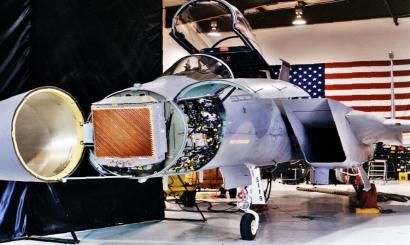
Cудя on everything, Su-35 should be positioned by the rival to this car, but, seemingly, will not pull. Eagle will see Drying much earlier and chances it hardly leaves. So on what – to such characteristics latest Su-35 there surpassed someone?











